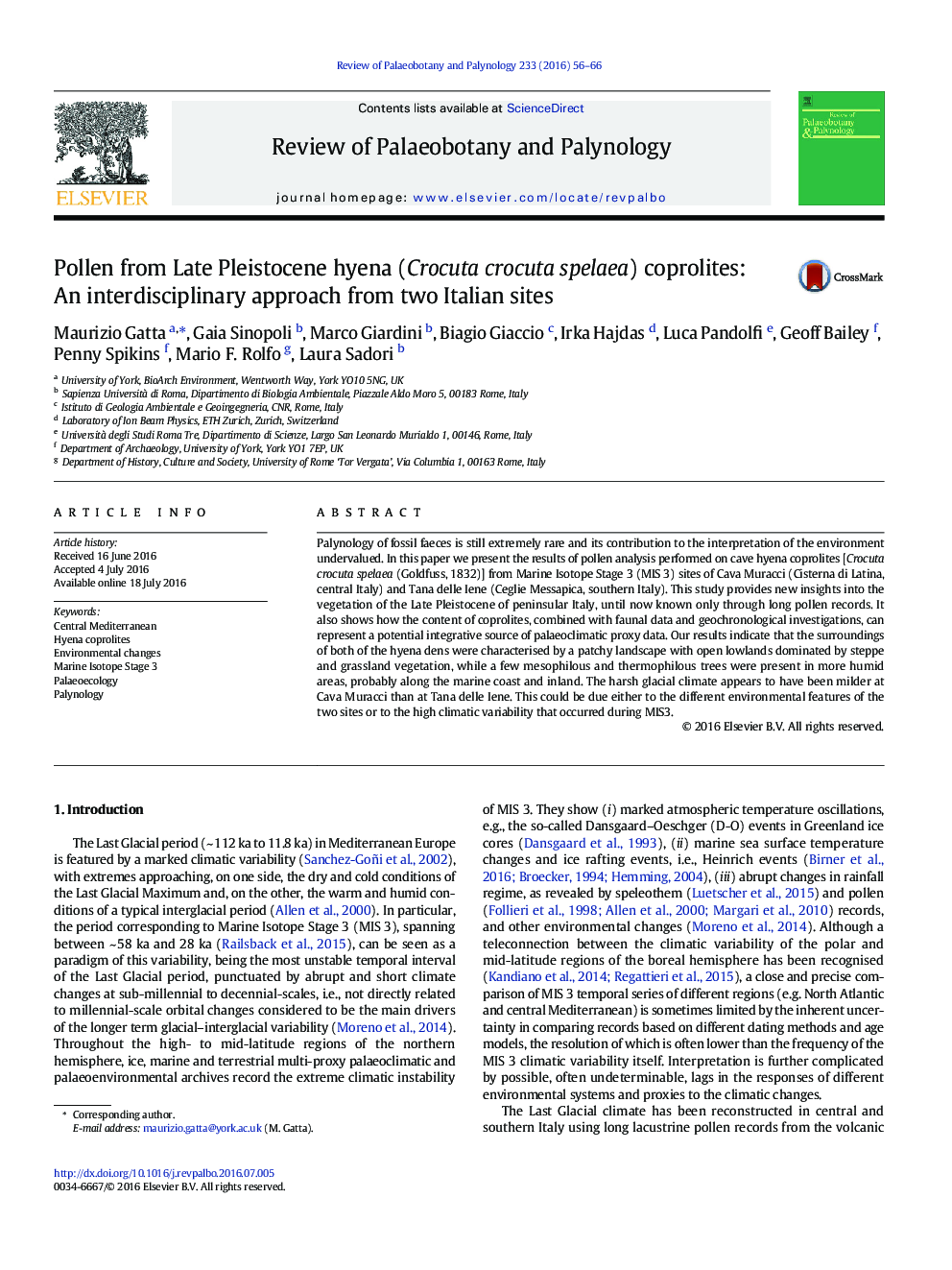| Article ID | Journal | Published Year | Pages | File Type |
|---|---|---|---|---|
| 4750041 | Review of Palaeobotany and Palynology | 2016 | 11 Pages |
•Coprolites content can represent an integrative source of palaeoclimatic proxy data.•Pollen analyses from faeces offer well-defined local environmental reconstructions.•Steppe/grassland vegetation was widespread in peninsular Italy during MIS 3.•Mesophilous and Mediterranean vegetation was present, even during a glacial period.
Palynology of fossil faeces is still extremely rare and its contribution to the interpretation of the environment undervalued. In this paper we present the results of pollen analysis performed on cave hyena coprolites [Crocuta crocuta spelaea (Goldfuss, 1832)] from Marine Isotope Stage 3 (MIS 3) sites of Cava Muracci (Cisterna di Latina, central Italy) and Tana delle Iene (Ceglie Messapica, southern Italy). This study provides new insights into the vegetation of the Late Pleistocene of peninsular Italy, until now known only through long pollen records. It also shows how the content of coprolites, combined with faunal data and geochronological investigations, can represent a potential integrative source of palaeoclimatic proxy data. Our results indicate that the surroundings of both of the hyena dens were characterised by a patchy landscape with open lowlands dominated by steppe and grassland vegetation, while a few mesophilous and thermophilous trees were present in more humid areas, probably along the marine coast and inland. The harsh glacial climate appears to have been milder at Cava Muracci than at Tana delle Iene. This could be due either to the different environmental features of the two sites or to the high climatic variability that occurred during MIS3.
